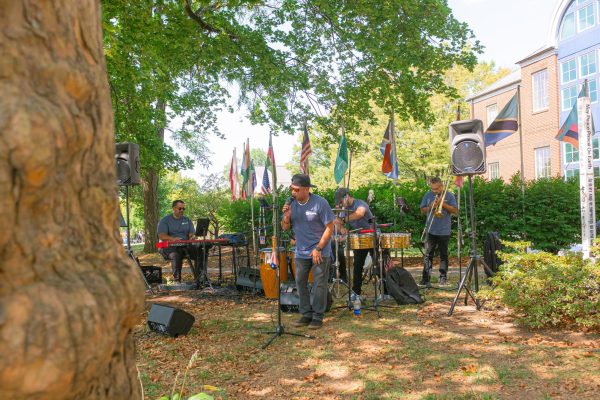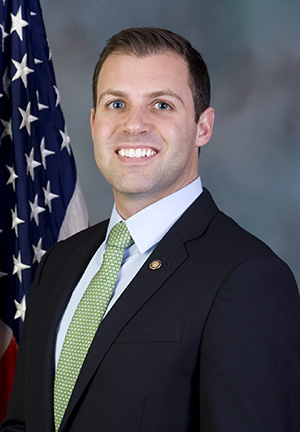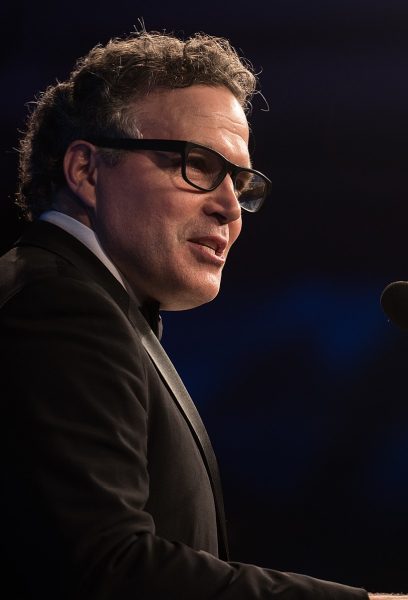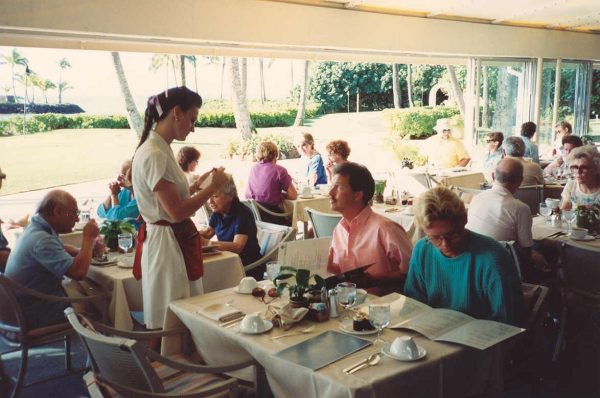Presidential Debate #1: Candidates Go Low
Last Tuesday night marked the beginning of the Presidential Debate series. President Donald Trump and former Vice President Joe Biden went head to head in Cleveland, Ohio, which is a swing state, where both major parties (Democratic and Republican) have similar levels of support and the election could go either way.
Topics included the Supreme Court judicial nomination, the country’s COVID-19 response, the economy, climate change, racial inequality, criminal justice, and election integrity.
It is important to note that Biden and Trump are not the only presidential candidates.
Howie Hawkins, of the Green Party, and Jo Jorgensen, the Libertarian, are also candidates. They did not meet the qualification for participating in the debate, however, because they don’t appear on a sufficient number of state ballots to have a mathematical chance of winning a majority vote in the Electoral College. They also don’t show a sufficient level of support.
The debate was divided into six, fifteen-minute sections, with a two-minute response for each candidate.
Moderator Chris Wallace quickly lost control as the candidates both shouted insults, called each other names, and made factually incorrect statements. I had to come back to my various notes to attempt to make sense of what we heard from both Trump and Biden.
The debate opened on a controversial and critical topic — the Supreme Court Justice replacement nomination following the death of the honorable Justice Ruth Bader Ginsburg.
Trump’s straight-to-the-point response was that he “won the election. Elections have consequences We have a top nominee. Respected by all.” Biden responded by saying, “The American people have a right to have a say who the Supreme Court nominee is. We should wait and see what the outcome of the election is.”
Neither candidate put much emphasis on the work — or the dying wishes — of Justice Ruth Bader Ginsburg.
On the on-going topic of COVID-19 there were no clear answers or plans from either candidate.
Trump said, “Far fewer people are dying” but failed to back that up with any figures. His opinion on masks was not very strong, either. “No, I think masks are OK,” he said. “I will put one on when I think I need it.”
According to Trump, the creation of a vaccine has become a highly political issue. He then said that he could push out an effective vaccine much earlier than the timeline projected by the CDC and his top scientists.
Biden contradicted Trump’s mask stance with a projection that masks could save 100,000 lives between now and January if worn properly, yet the accuracy of that statement is unknown.
The only aspect of foreign policy and international relations that we heard from either candidate was Trump’s claim that foreign countries don’t give straight numbers about deaths from COVID-19 and that American citizens “don’t know how many people [have] died.”
Biden’s strongest point was that the economy, businesses, and schools can and should reopen, but only with proper safety measures. “Get people the help they need,” he said. “Do what needs to be done to save lives.” His attention was clearly focused on middle- and lower-class families throughout the debate, but whether or not he reached them is unclear.
The discussion on the economy was difficult to follow as Trump and Biden yelled over each other and the moderator, yet again. Although it was clear both candidates disagreed about the state of the economy, neither produced reliable statistics or plans on the subject.
Racial inequality has been a prevalent topic of conversation in the United States following the recent deaths of Breonna Taylor, George Floyd, and other Black Americans.
Trump ended the police’s racial sensitivity training because he believed it was racist. Biden promised to reinstate the training and bring more people and organizations to the table to continue the conversation about race.
Trump’s comment on the topic of violent protests was that the protestors and state governors “don’t want to accept the National Guard.” He criticized Biden for not calling on governors to control the protests. Biden’s clearest response was that he opposes defunding the police and that violence should be condemned. People have the right to peacefully protest but not to use violence, he said.
In the day after the debate, excluding the “dumpster fire” of the debate itself, the biggest topic of conversation was Trump’s failure to condemn white supremacy outright. When Biden asked him to do so, Trump responded, “What do you want me to call them? Almost everything I see is from the radical left wing.”
Perhaps one of the most forward-thinking and most policy related topics of the evening was on climate change. At this point in the debate, both candidates began to settle down and allow the other to speak, even if just a minuscule amount more.
Trump said the “Paris Accord was a disaster from our standpoint.” His environmental plan focused on the “need [for] forest management.” He also said, “I’m all for electric cars.” About climate change itself, Trump asserted that humans have an impact on the environment “to an extent.”
For his part, Biden said he would rejoin the Paris Climate Accord and impose economic sanctions on those nations that do not. Biden’s plan was to create thousands of jobs through a green infrastructure plan.
Each candidate used pet phrases throughout the debate, usually when interrupting the other speaker.
Trump’s was “you just lost the radical left.” Biden’s were “here’s the deal” and “listen.” Trump also claimed a few times that “They give you [Biden] good press. They give me bad press.”
Low moments included Trump’s comments about Biden’s sons Hunter and the late Beau. To Trump, Biden said, “You are the worst President in American history” and “shut up, man” to name a few.











